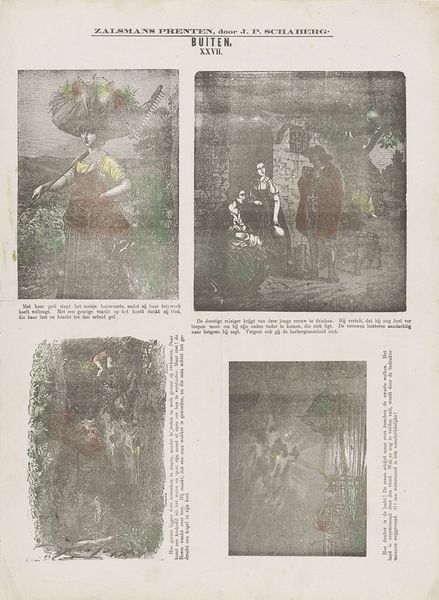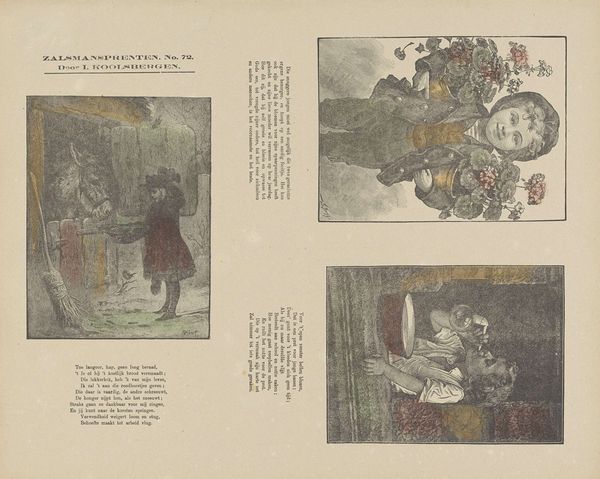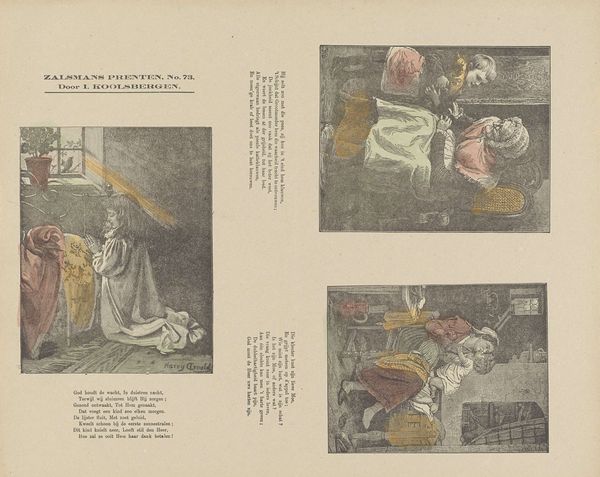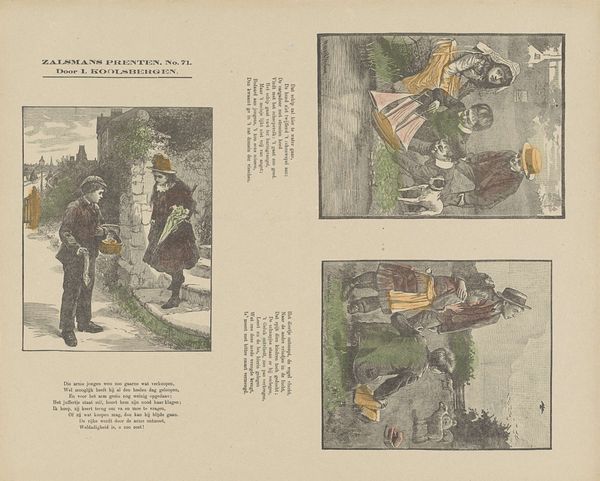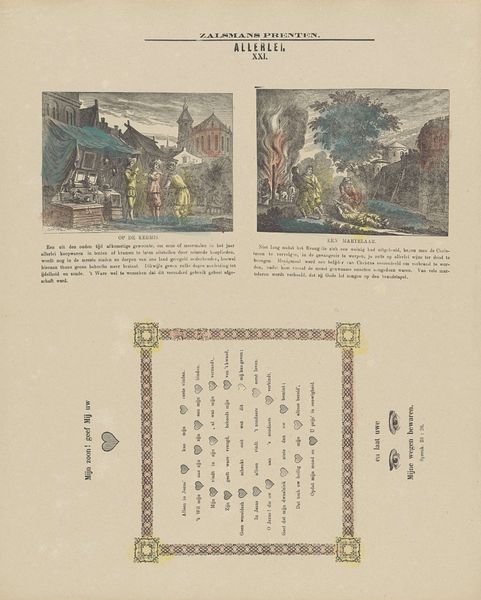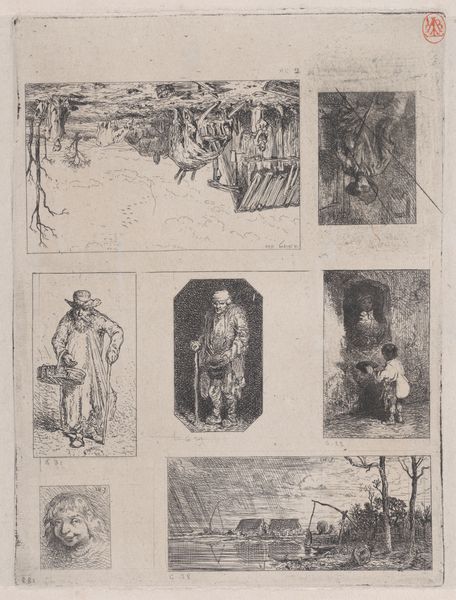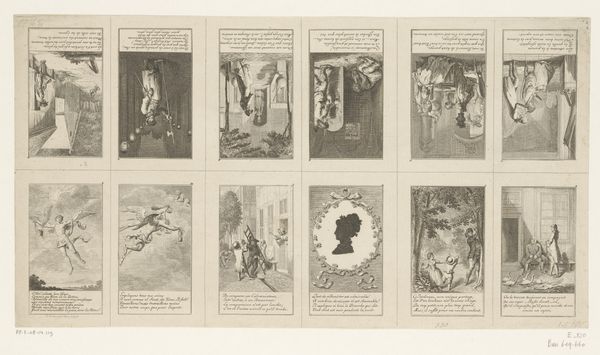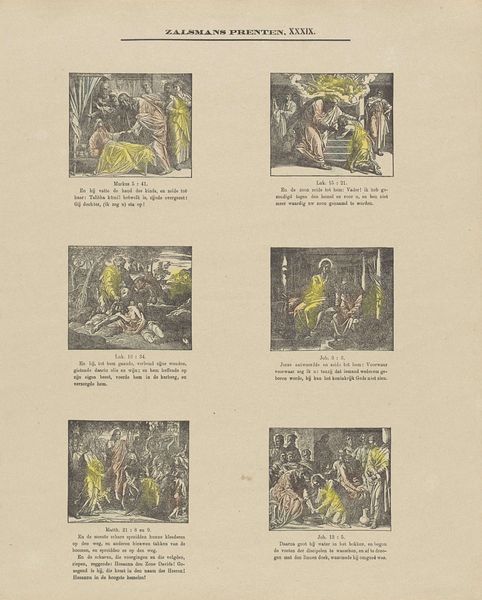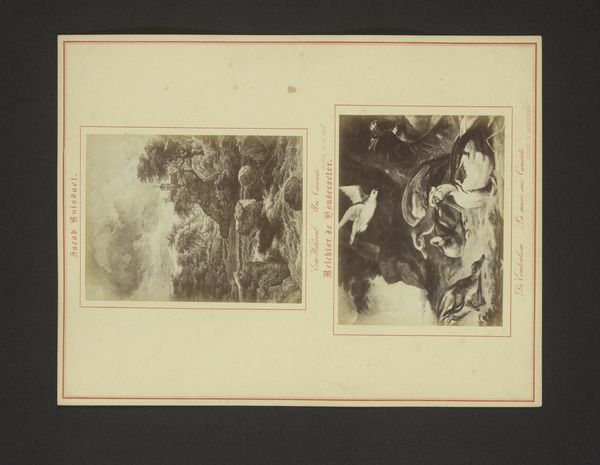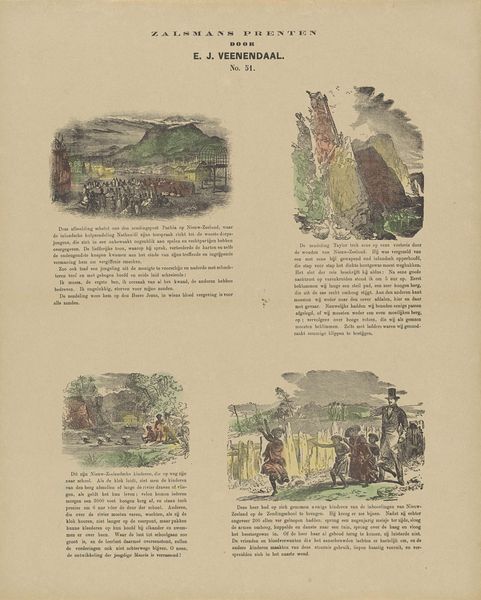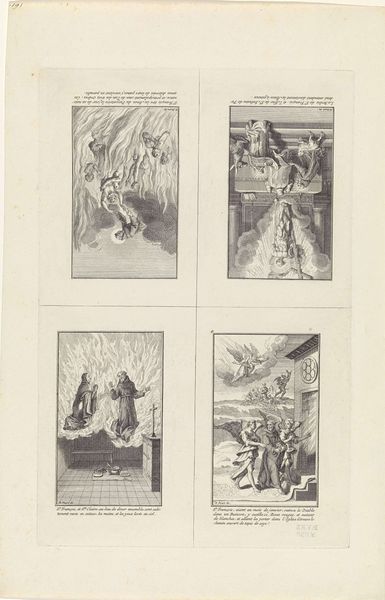
graphic-art, print
#
graphic-art
# print
#
landscape
#
genre-painting
#
watercolor
Dimensions: height 432 mm, width 340 mm
Copyright: Rijks Museum: Open Domain
Editor: So, this is "Buiten," a print by Gerhardus Philippus Zalsman, likely made between 1869 and 1882. The page is divided into four scenes, and it gives me the feeling of a set of stories in the countryside. What are your thoughts when you see it? How do you approach something like this? Curator: Intriguing. Initially, I'm drawn to the distribution of value across the four panels; observe how each one carves out its tonal space. Note the upper left's focus on brighter tones that shift towards darker hues as we move clockwise. It’s tempting to look for a narrative connection, but perhaps more illuminating is understanding the structural relationship between these individual images as compositional studies. Are there recurring shapes? Linear motifs? Editor: Well, each one has figures within a landscape, and there is an arc framing people or animals, or suggesting an entry way or something opening up to nature. Would that be considered the artist playing with shape? Curator: Precisely. It isn't only playing, but perhaps rigorously investigating. What structural relations become possible when that shape echoes through narrative and light? Consider how this arced structure influences your reading of each scene individually. Does it unify or fragment the intended stories? Editor: I see it! Framing my view in that way really helps make the relationship clearer and notice echoes of composition. I thought there would be some simple explanation in the scenes or watercolor style but I found much more interesting and fruitful perspective. Curator: Art often functions beyond its immediate representation; it embodies relations, patterns, and forms that subtly condition our apprehension and understanding. Always begin with structure, and further meanings may well be generated.
Comments
No comments
Be the first to comment and join the conversation on the ultimate creative platform.
